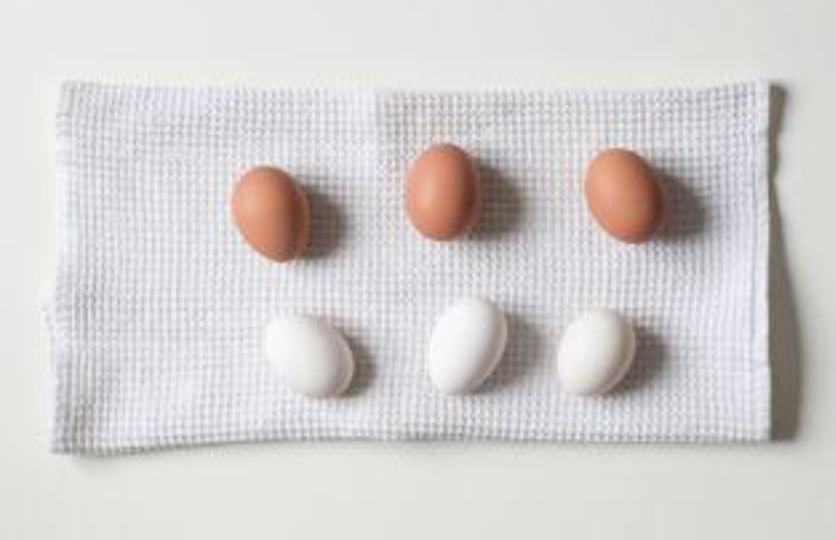Managing Macros: What Are They and How Do I Calculate Them?

So, you’ve been reading up on the keto diet.
You may have read a few blogs, gotten a book at the store, talked to your friends who have been on a keto diet before and they all mentioned the same buzzword, ‘macros’.
But what are macros and how do you calculate them?
‘Macros’ is short for macronutrients. It’s a common term used when people talk about nutrition or the keto diet.
Any source of energy for your body is considered a macro.
That includes:
- Carbohydrates
- Protein
- Fat
All of your dietary calories come from these macronutrients. In order to have a balanced diet, you need to have some of all three.
But if you want your body to go into ketosis and start burning your fat stores, you need to find a way to balance your macros differently.
Carbohydrates
Carbs are not essential for you to survive.
Sugars and starches are carbs as well as fiber. But since your body doesn’t digest fiber fully, it doesn’t have to count towards your carb total.
When you are reading a label and counting your carbs, make sure that you subtract the amount of fiber from the total amount of carbs to find out the number of net carbs that you are eating.
Protein
Your body uses protein to repair your tissues, grow, support your immune system, make hormones and enzymes, and maintain your energy levels.
Protein is vital to your body’s nutrition.
If you don’t get enough protein, you may notice yourself losing muscle mass.
While you are on the keto diet, you will need to up your protein consumption to make up for your lack of carbs.
For every pound of lean muscle mass that you have, you should eat around 0.7g of protein so that you don’t lose muscle.
If you want to gain muscle, you will need to eat around 1 – 1.2g per pound of muscle mass.
Try not to create a deficit of protein or your body may start to burn muscle instead of fat.
Fat
Fat is necessary for absorbing certain vitamins, giving you energy, helping your body develop, and providing cushioning for your organs.
Fats also help you stay full in between meals and make your food a lot more flavorful.
A lot of people who are new to the keto diet are nervous about eating a lot of fat like oil and butter after being told to moderate their consumption for so long.
But on the keto diet, fats are your friend.
Make sure you have enough fat in your diet if you have been feeling extra hungry lately.
Keto-Friendly Fruits: What You Need to Know

Before I started the keto diet, I ate strawberries all year round.
I put them in smoothies, made my own crepes at home, and always had a jar of strawberry jam in my refrigerator.
One of the hardest parts about adjusting to this diet was cutting back on my favorite fruit.
But, I had to do it. I wasn’t losing the amount of weight that I wanted to and I decided I had to be strict with myself if I wanted to see the results I desired.
While many people eat strawberries on the keto diet, I figured out that strawberries have 11g of carbohydrates in just one cup.
What I had thought was a fairly innocent snack was adding up to be a really significant source of carbohydrates.
But I didn’t have to despair for long.
You may have heard that you can’t eat fruit at all on the keto diet. But there are actually several fruits that you can enjoy in moderation.
In general, try to opt for fruits that are less sweet. If they have a tart or savory flavor, they usually contain less natural sugars and therefore, lower carbs as well.
You can also choose fruits that are high in fiber. Every gram of fiber than you eat can be subtracted from your total carb count.
Common Fruits With Less Than 7g of Net Carbs Per 100g:
- Olives
- Coconut
- Blackberries
- Avocados
- Raspberries
- Lemon Juice
- Lime Juice
- Boysenberries
- Grapefruit
There are also some fruits that you should avoid at all costs:
- Dates
- Bananas
- Pineapple
- Grapes
- Plantains
No matter how much you like juice, don’t be tempted. When fruits are juiced, most of the fiber is stripped from them. That means that they have a higher carb content than the fruit whole.
Drinking juice can also have a big impact on your blood sugar levels causing your energy levels to spike and then sharply drop off. If you want to feel full and focused while you are on the keto diet, you have to be careful to avoid these spikes.
Dehydrated fruit is another big thing to avoid. The more processed your fruit is, the more likely it is to have a high carb and sugar content.
The rules on fruit may be a lot to remember.
As a general rule, try to avoid eating any fruits that have more than 10g of carbs for a 100g serving.
Keen on Keto: 5 Beginner Tips for Transitioning to a Keto Diet

Eating a high-fat and low-carb diet will be tough at first.
You may get a headache, have low energy levels, or feel like you’re hungry a lot of the time.
But after a few days, your body will begin to adjust as you enter ketosis.
The amount of time it takes will vary based on:
- Your age
- Exercise level
- Metabolism
- Nutrition intake
But, there are a few steps you can take to make the adjustment period a little easier. Check out these tips.
1. Make Your First Meal Plan
If you want to be successful switching to a keto diet you should plan ahead. Create a meal plan for the foods you want to eat.
You won’t be able to reach for whatever is in the fridge. Chips, cookies, bread, and even fruits and veggies all contain carbs.
You should include snacks on your meal plan as well particularly at the beginning of your diet as you’re more likely to have cravings.
2. Get Comfortable With Fat
Fat has gotten a bad rep in the media. Adjusting to a high-fat diet can be difficult for a lot of people.
Consider easing into it by making small adjustments to your diet every day or weekly. Begin by subbing parts of your meals for more keto-friendly options.
You should also add more oil into your recipes to ensure your body gets enough fat.
3. Get Ready to Cook
If you plan to be on the keto diet long term, you need to get comfortable with cooking the majority of the food that you eat.
You can’t just go out to a restaurant and order anything off of the menu. You need to have control over the cooking process.
Fortunately, there are a ton of chefs out there that design new recipes every day for keto dieters.
4. Start Your Day With Bulletproof Coffee
Overnight, your body goes into a fasting state. If you’re someone who wakes up with a lot of hunger in the morning, you may want to consider making a cup of bulletproof coffee.
All you have to do is mix some coconut oil or butter into your coffee. It will keep you fueled for hours.
5. Let Your Friends and Family Know What You’re Doing
In order to be successful on any diet, it’s important for you to have a support team. A lot of people have misconceptions about the keto diet and may express concern when you tell them that you are on it.
In order to avoid any interference in your decision, talk to your friends and family members about your diet before you begin.
Let them know you are committed and explain to them that it is a healthy and successful way to achieve your goal.
